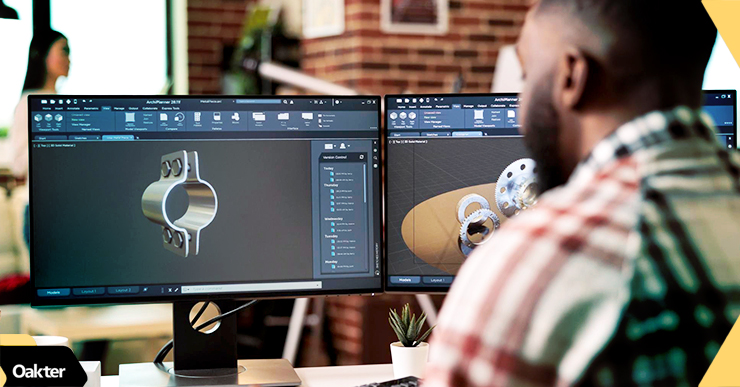
From Concept to Market: The Role of Prototyping in Contract Manufacturing
Contract manufacturing plays a crucial role in streamlining production processes and enabling companies to focus on core competencies. However, within this framework, the significance of prototyping cannot be overlooked.
Prototyping in contract manufacturing serves as a pivotal step that allows businesses to validate product designs, enhance functionality, and minimise production risks.
This article aims to explore the role of prototyping in contract manufacturing, emphasising its benefits and challenges.
By shedding light on the importance of effective prototyping, businesses can understand how it facilitates a seamless transition from concept to market, ensuring successful product launches and market competitiveness.
So, let’s dive deeper into it now!
What is Contract Manufacturing?
Contract manufacturing is a strategic business arrangement where a company outsources the production of its products to a specialised manufacturer, known as the contract manufacturer.
This collaboration allows the original equipment manufacturer (OEM) to focus on their core competencies, such as product design, marketing, and distribution, while leveraging the expertise and capabilities of the contract manufacturer to handle the production process.
Prototyping: an Outline

Prototyping is a pivotal phase in the contract manufacturing process that involves creating a working model or sample of the product before commencing mass production.
The purpose of prototyping is to test and validate the product’s design, functionality, and manufacturability, allowing for necessary refinements and improvements before proceeding to large-scale production.
The Prototyping Phase in Contract Manufacturing
The prototyping phase in contract manufacturing holds immense importance in product development. It serves as a critical testing ground for new product concepts and designs. By creating physical or virtual prototypes, manufacturers can visualise, evaluate, and refine their ideas before proceeding to large-scale production.
This early validation process helps identify design flaws, functionality issues, and potential improvements, ultimately leading to the development of high-quality products that meet customer expectations.
What Are the Objectives of Prototyping?
Here are some key objectives of prototyping in contract manufacturing:
1. Validating Product Design
Prototyping allows manufacturers to assess the feasibility and practicality of their product designs. It helps ensure that the intended functionality, form, and aesthetics align with the initial concept.
2. Enhancing Functionality
Through prototyping, manufacturers can evaluate and fine-tune the product’s performance, ensuring it meets the desired specifications and delivers optimal results.
3. Identifying Manufacturing Issues
By creating prototypes, manufacturers can identify potential production challenges early on and devise solutions to optimise the manufacturing process.
4. Gathering Stakeholder Feedback
Prototypes facilitate effective communication between the client, designers, and manufacturers, allowing for feedback and collaboration to improve the final product.
Streamlining Product Development: The Prototyping Process Unveiled
Let’s explore the steps in the prototyping process that pave the way for efficient and effective contract manufacturing:
1. Initial Design and Conceptualisation
The journey begins with brainstorming and conceptualising the product design. Manufacturers collaborate with designers and clients to outline the product’s features, functions, and target audience. Initial sketches and mock-ups help shape the vision and set the foundation for subsequent steps.
2. Material Selection and Sourcing
Selecting suitable materials is critical for product success. Manufacturers meticulously analyse the characteristics of various materials, considering factors like strength, durability, cost, and environmental impact. The goal is to choose materials that align with the product’s requirements and desired attributes.
3. 3D Printing and Rapid Prototyping
Incorporating cutting-edge technology, manufacturers create rapid prototypes using 3D printing. This step allows for quick visualisation and evaluation of the product’s physical form, making it easier to spot design flaws and make necessary adjustments.
4. CNC Machining and Tooling
To produce more refined and precise prototypes, manufacturers employ Computer Numerical Control (CNC) machining. This computer-controlled manufacturing process ensures high accuracy and consistency in creating complex product components.
5. Testing and Evaluation
The final step involves rigorous testing and evaluation of the prototypes. Manufacturers assess the product’s performance, functionality, and manufacturability. Feedback from stakeholders is incorporated, leading to further refinements and improvements.
Accelerating Success: The Many Benefits of Prototyping in Contract Manufacturing
Let’s explore the key advantages of prototyping in contract manufacturing:
1. Minimising Design Flaws and Improving Product Quality
Prototyping allows manufacturers to detect and rectify design flaws and inefficiencies at an early stage. By testing the physical or virtual model, potential issues can be identified and addressed, leading to higher product quality and customer satisfaction.
2. Reducing Production Costs and Lead Time
Through prototyping, manufacturers can optimise production processes and material selection, ultimately reducing overall production costs and shortening lead times. This efficiency gains a competitive edge in the market.
3. Streamlining Communication between Client and Manufacturer
Prototypes serve as effective communication tools between clients, designers, and manufacturers. They provide a tangible platform for sharing ideas, gathering feedback, and aligning expectations, fostering a collaborative and efficient development process.
4. Enhancing Customisation and Personalisation Options
Prototyping enables customisation and personalisation of products according to specific customer needs. Manufacturers can tailor designs and functionalities based on individual preferences, boosting customer satisfaction and loyalty.
5. Mitigating Risks in Large-Scale Production
By thoroughly testing prototypes before mass production, manufacturers can identify potential risks and challenges, thereby minimising the likelihood of costly errors during large-scale manufacturing.
Navigating the Prototyping Phase: Overcoming Challenges and Considerations in Contract Manufacturing
Prototyping is a critical phase in contract manufacturing, but it comes with its fair share of challenges and considerations that demand careful attention. Here are some of them:
1. Time and Resource Constraints
The pressure to meet tight deadlines and limited resources can impede the prototyping process. Striking a balance between speed and thoroughness is vital to ensure prototypes are developed and evaluated efficiently without compromising quality.
2. Iterative Prototyping and Design Refinements
The iterative nature of prototyping can lead to design fatigue and additional costs. Managing multiple design refinements requires a clear roadmap and close collaboration between designers and manufacturers to achieve the best possible outcome.
3. Intellectual Property Protection
Sharing sensitive product information with contract manufacturers raises concerns about intellectual property protection. Implementing robust confidentiality agreements and legal safeguards is essential to safeguarding proprietary designs and concepts.
4. Managing Expectations and Communication with the Contract Manufacturer
Effective communication and alignment between the client and the contract manufacturer are crucial to avoid misunderstandings and ensure a successful prototyping process.
Clear and open channels of communication facilitate the exchange of feedback and ideas, enhancing collaboration and problem-solving during the development journey.
Creating Quality Products: The Impact of Effective Prototyping in Contract Manufacturing with Oakter
Prototyping plays a pivotal role in contract manufacturing, ensuring successful product development and business growth. Effective prototyping validates designs, enhances functionality, and mitigates risks, leading to high-quality products that meet customer demands.
For superior contract manufacturing services and advanced prototyping capabilities, you can choose Oakter as your trusted partner.
Contact us today to bring your visionary products to life!

